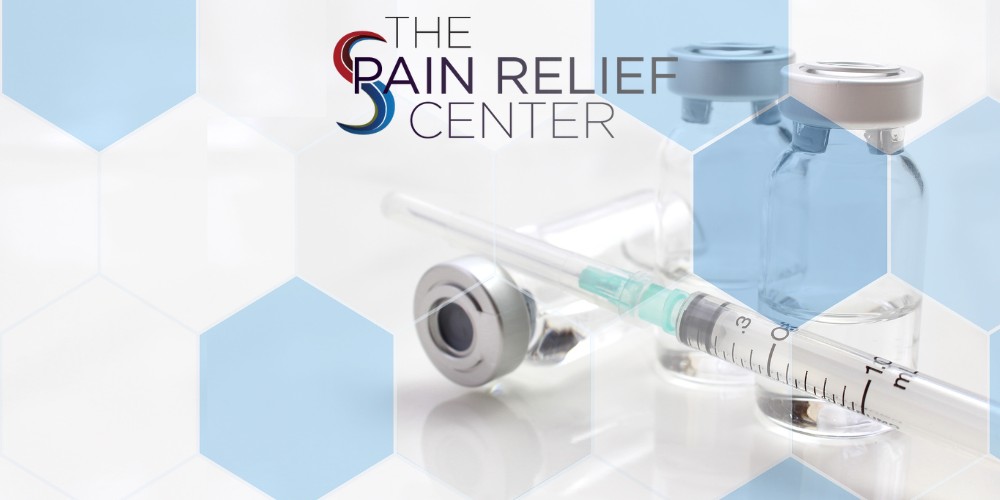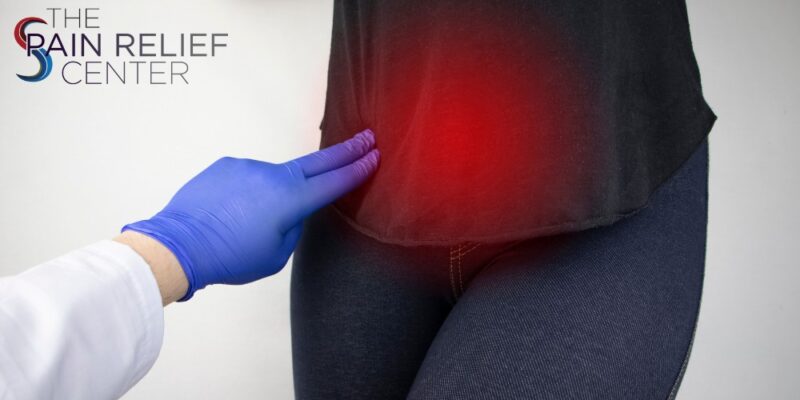Superior Hypogastric Plexus Block in Dallas, Frisco, and Plano
Chronic Abdominal and Pelvic Pain Relief
CENTERS & INSTITUTES

Pain in the abdomen and pelvis can really put a damper on your everyday life. Luckily, there are many non-surgical solutions for treating pain in these areas of the body. One solution is called a superior hypogastric plexus block (SHPB). These injections can be used to either diagnose or treat pain in the abdominal and lower pelvic regions. If you suffer from stubborn pain that other treatments haven’t helped, an SHPB may be the right option for you.
At The Pain Relief Center, our chronic pain and acute pain experts have extensive experience diagnosing and treating countless sources of pain in our patients. When someone experiences debilitating pelvic and genital pain, they may experience both frustration and embarrassment. However, there is hope for this issue. The Dallas pain management specialists at our clinic can help you achieve lasting relief from your chronic pelvic pain. To schedule an appointment with us, please call our office at 214-709-1904 today.
What Is a Superior Hypogastric Plexus Block?
A superior hypogastric plexus block (SHPB) is one of the types of injections that we offer for our patients who struggle with chronic pain in the abdominal or pelvic region. It can be used to both diagnose and treat pain in those areas. The superior hypogastric plexus is the intersection of many nerves that transmit certain types of pain signals from the pelvis and the lower abdomen. It rests in the lower part of the back, right in front of the spine.
What Types of Pain Does a Superior Hypogastric Plexus Block Help?
Because the superior hypogastric plexus only transmits certain types of pain, an SHPB will not be equally effective for all sources of abdominal and pelvic pain. However, it can relieve pain that originates from the bladder, colon, intestines, ovaries, uterus, testicles, and even the prostate. In other words, it is especially effective for visceral pain in the pelvic organs.
What Organs Does a Superior Hypogastric Plexus Block Affect?
A superior hypogastric plexus block can help with pain that originates from many organs and body parts located in the lower abdomen and pelvis. Some examples of these organs and body parts include the following.
- Uterus
- Urethra
- Bladder
- Vulva
- Vagina
- Prostate
- Perineum
- Testes
- Rectum
- Colon
- Lower intestines
Therefore, if chronic pain develops in any of the above areas, an SHPB may be an effective way to achieve pain relief.
What Conditions Is a Superior Hypogastric Plexus Block Used to Treat?
Many conditions that produce pelvic pain and abdominal pain can benefit from this minimally invasive procedure. When other conventional treatments, such as oral medications, fail to relieve your pain, a superior hypogastric plexus block may be the next step. Pelvic pain tends to be very serious, and it often persists for long periods of time. It can also radiate and spread to more than one area. An SHPB may be recommended for pain management for the following conditions.
- Certain nonmalignant pain syndromes
- Radiation-induced neuropathy
- Radiation injury, such as burns
- Endometriosis
- Bladder cancer
- Cervical cancer
- Injury to the pelvic area
- Uterine cancer
- Endometrial cancer
- Prostate cancer
- Colon cancer
- Chronic pain in the lower abdomen or pelvis
As we mentioned before, an SHPB can also be used as a diagnostic tool. For example, maybe your doctor suspects that one of your pelvic organs is the source of your pain. To confirm this, they may perform a superior hypogastric plexus block. If you feel relief from your pain after the injection of local anesthetic, the doctor has confirmed their suspicions.
How to Prepare for a Superior Hypogastric Plexus Block
It is essential that you adequately prepare for the procedure before you go through with it. Your pain management doctor will walk you through the steps and explain how the procedure works before you ever schedule an appointment. You’ll also need to discuss your current medications and medical history with them. Some patients must stop taking certain medications a few days before the procedure to avoid any complications. Notify your doctor if you have a history of any of the following.
- Allergic reaction to medications
- Issues with contrast dye, numbing medicine, or anesthesia
- If you are currently pregnant or if you might be pregnant
Depending on your specific circumstances, your doctor may ask that you refrain from eating or drinking after a certain time the night before the procedure. You should also arrange for someone to drive you home after the procedure.
What Happens During a Superior Hypogastric Plexus Block?
Your provider will explain the entire procedure before you undergo it. While the exact procedure may differ a bit from person to person, the steps will be very similar to the following.
- The patient will lie prone (on their stomach) on the procedure table.
- Depending on each specific patient’s needs, you may be sedated in order to help you relax.
- A medical professional will constantly monitor your heart rate, oxygen levels, and blood pressure during the procedure.
- The injection site will be thoroughly cleaned and disinfected.
- The doctor will numb the injection site with a local anesthetic. You may feel a brief sting, but not for longer than a few seconds.
- They will then insert two different needles into the injection area in your lower back. Each needle will be near a hip bone. In order to correctly position the needles, they will use imaging such as X-rays. They will inject contrast dye into the area to ensure the needles are placed properly.
- Then, they will inject the pain killing medication into the area. Depending on your specific needs, the doctor will use which medication will work best for you. Once the shot is complete, you may feel a slight burning sensation in the injection area.
Who Can Administer a Superior Hypogastric Plexus Block?
Qualified pain management doctors are trained to administer these injections. The board-certified pain physicians at The Pain Relief Center are uniquely qualified and highly skilled when it comes to therapeutic block injections and other conservative therapies.
Is a Superior Hypogastric Plexus Block an Outpatient or Inpatient Treatment?
These procedures are usually performed as outpatient procedures. This means that you will go home once the procedure is complete. As we mentioned before, you should arrange to have someone drive you home once the procedure is finished. You should not drive or do anything strenuous for the rest of the day.
How Long Does a Superior Hypogastric Plexus Block Take?
A hypogastric block is a very simple procedure. At maximum, the procedure may take as long as thirty minutes. However, the average amount of time the procedure takes is around fifteen minutes.
How Effective Are Superior Hypogastric Plexus Blocks?
Most patients who receive a superior hypogastric plexus block experience significant relief from their pain. After an SHPB, patients can achieve semi-permanent relief from their chronic pain. It can also reduce the amount of oral pain medication one takes for pain management. Patients suffering from both malignant and non-malignant conditions can benefit from this treatment option.
How Long Do the Benefits of a Superior Hypogastric Plexus Block Last?
In general, patients can experience relief from their pain for anywhere from a few weeks to a few months. When the initial injection begins to wear off, you can schedule follow-up injections with your provider. Your doctor will determine how often it is appropriate to administer these injections on a patient-by-patient basis.
What Happens After a Superior Hypogastric Plexus Block?
Immediately after the procedure, you will be monitored for at least thirty minutes, but up to an hour. Once you are cleared to return home, you should have someone else drive you. Refrain from any strenuous activity for the rest of the day, and try to relax as much as possible. Speak with your doctor for more information on what specific activities to avoid. You should also ask them when you can resume taking your normal medications.
You may feel a bit of pain or soreness at the injection site for a few days. This is normal. However, if you experience any of the following symptoms, you should call your doctor immediately.
- Fever
- Numbness or weakness in your legs
- Signs of infection, such as redness, swelling, or oozing from the injection site
- Pain that is very severe
Be sure to report the effects of the SHPB to your provider. This will help them get a better idea of how to continue your treatment moving forward.
What Are the Risks and Complications of a Superior Hypogastric Plexus Block?
Although the potential risks of a superior hypogastric plexus block are lower than the risks of certain surgical procedures (like superior hypogastric plexus neurolysis), this does not mean that there are no risks. Like most procedures, there is always at least a small degree of risk. However, open communication with your provider can help mitigate the chances of complications. In general, an SHPB is a very safe procedure. Some potential side effects associated with the procedure include the following.
- Temporary decrease in the patient’s blood pressure
- Spinal cord damage
- Nerve damage
- Damage to blood vessels
- Damage to organs nearby
- Infections
- Bleeding
- Allergic reaction to medication
Contact The Pain Relief Center Today
If you’re suffering from chronic pain in your pelvis or lower abdomen, a superior hypogastric plexus block may help alleviate this pain. We recommend scheduling an appointment with our Dallas pain management specialists for an initial consultation. We will evaluate your symptoms, take a thorough medical history, and recommend a treatment plan that works for you. To schedule your appointment with us, please call our clinic at 214-709-1904 today.
Other nerve block treatments that we offer include the following:
TAKE ACTION
The most critical step on the path to recovery is finding a pain management doctor who can address your pain management needs successfully. The Pain Relief Center and its five specialized institutes are dedicated to meeting any and all of a patient’s needs. Located in the Dallas-Fort Worth area, Dr. Rodriguez and his friendly staff will help you along the path to recovery.
Our new center in Dallas is part of a nationwide development by Pain Relief Centers, geared to providing individualized and comprehensive healing and pain management services with unprecedented levels of compassion, care, and comfort for each patient.




